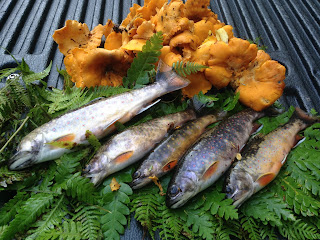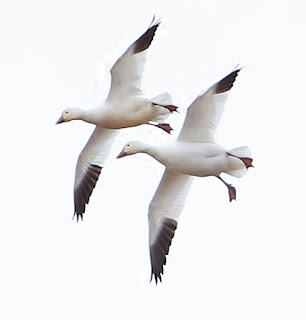The old
green Mansfield canoe glides silently through the bay, its bow pointing toward
the narrow ribbon of moonlight reflecting on the water. Reeds brush gently by
the gunwhales as we maneuver our way down the murky channel and into the
cattails.
We can
hear the raucous laughter of mallards from a pool deep in the swale grass
behind the trees.
We
whisper to one another “That’s Right!” at the same time.
Whistling wings whiz
by our heads as we turn into the small slot in the puckerbrush. The sides of
the canoe squeak loudly against the ragged edges of the woody
branches, like nails on a chalkboard.
I am
hunting with my friend John Lesher in a new spot. The water level in the lake
is so low this year that we had to forego the blinds we normally build in the
larger backwaters. This year is going to be all about adaptation and honoring
our canine partner of twelve years.
We slide
out of the canoe in our waders as quietly as we can, mud swallowing our feet in
the decaying detritus of swamp gas and pungent wetland vegetation. We have to
lean forward with each step to navigate the morass, our rear feet making a deep
sucking sound when they are finally freed from the primordial ooze.
I love
this. I love everything about this sport. The mud, the smells, the sounds, even
the challenge of setting decoys in a small pool of water surrounded by muck.
We get
the wood duck decoys situated to the side, greenwing teal to the rear and
mallards to the front of a “J” hook pattern, the top of the letter facing into
the wind, creating a landing zone in the crook of the bottom of the pattern.
We retreat
to the canoe, and comfort John’s 12 year old yellow lab, Remi. This will be his
last season.
He will
not be asked to retrieve or suffer the indignities of getting stuck in the mud
chasing a duck. This year John and I will retrieve the birds and offer them to
him in a gracious manner of consent that he has been a great partner for 12
long years, retrieving hundreds of birds, and as he always has, guarding the ubiquitous
donuts.
Remi will be our Guest of Honor this season, allowing him a chance to
bask in the glory of what he has most loved during his glorious dozen seasons
with us.
As the
dark purple horizon begins to show shades of sage and burnt orange, the swamp
awakens.
We still
can’t see the birds, but we hear them landing in the decoys and flying just
over our heads along the tree line.
6:32am is legal shooting time on Opening
Day and we stare at our watches, hearts racing in time with the sweep second
hand.
There are a half dozen birds in the spread, and although we can see the
wake caused by their swimming bodies, we cannot distinguish the species.
We wait
impatiently. The cup of coffee is sitting on its side amidst the oak ribs of
the hull, black liquid mixing with the mud in the bottom of the boat.
The time
has come.
On the
count of three we rise to our knees and raise our shotguns in unison.
Nothing moves.
Suddenly
a flock of bluewing teal strafe our spread, miniature fighter jets, their wings tearing
the cool morning air. They race forward and circle back to land at the rear with the plastic
deceivers. As they make their final approach, we both shoulder our guns and
fire.
The
season has begun.
Remi
smiles.




















